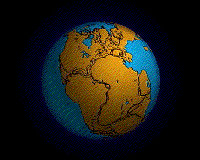THE GIST:
- One type of phytoplankton that feeds on iron could sequester carbon, but may also produce a potent neurotoxin.
- The neurotoxin can and has killed or weakened fish, birds and people.
- Other geoengineering schemes may have similar, unintended consequences.
 Although phytoplankton may prove an unlikely ally in the effort to reduce the impact of climate change, enlisting these microorganisms to sequester carbon could have deadly consequences.
Although phytoplankton may prove an unlikely ally in the effort to reduce the impact of climate change, enlisting these microorganisms to sequester carbon could have deadly consequences.
One proposed method to combat climate change is to dump iron in regions of the ocean where the growth of marine phytoplankton -- tiny organisms that grow via CO2-absorbing photosynthesis -- is limited by the amount of iron available.
Adding iron is intended to cause a bloom of phytoplankton growth, sucking up CO2 in the process.
But new findings, published today in the Proceedings of the National Academy of Sciences, show that one type of phytoplankton that thrives under such circumstances makes domoic acid, a potent neurotoxin. This neurotoxin can move up the food chain as other animals eat the phytoplankton, harming sea life. The toxin can kill or weaken birds, fish, sea mammals or even humans who eat seafood that contains the toxin.








